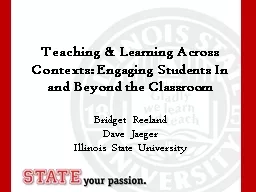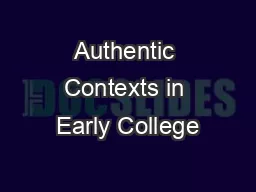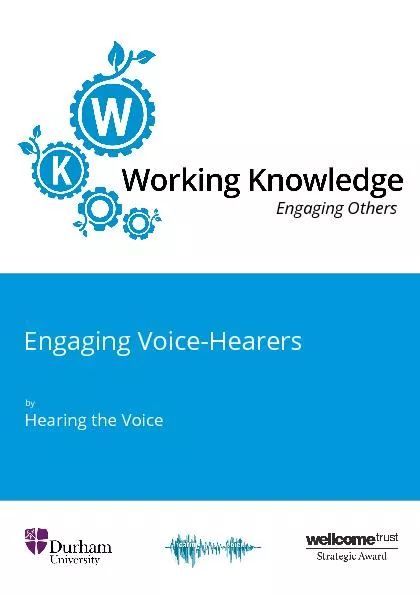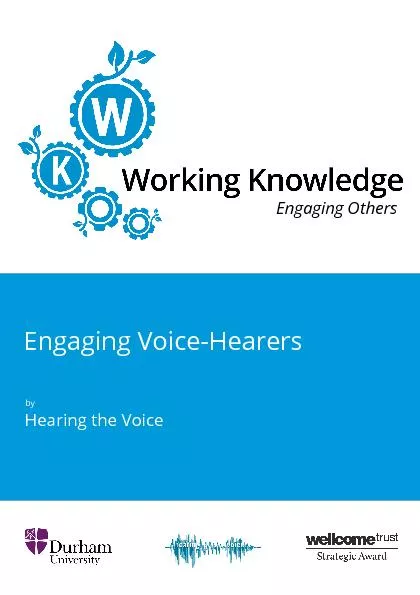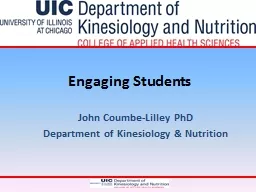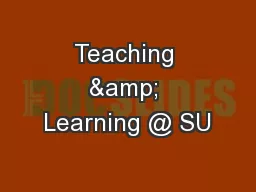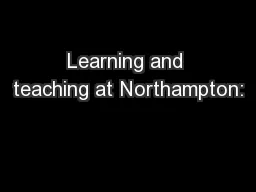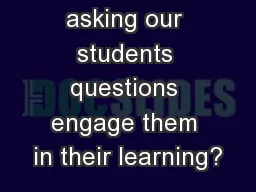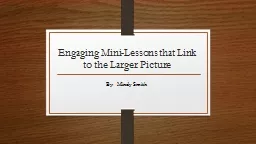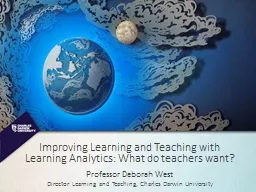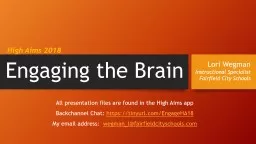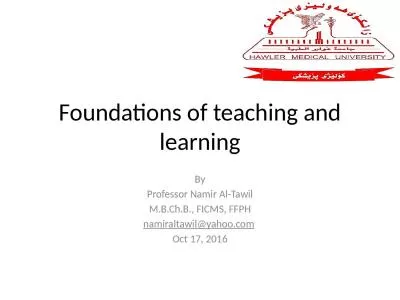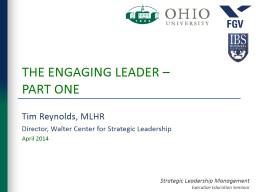PPT-Teaching & Learning Across Contexts: Engaging Students
Author : stefany-barnette | Published Date : 2015-12-05
Bridget Reeland Dave Jaeger Illinois State University Session Outcomes Attendees will Understand benefits of living learning environments as suggested by research
Presentation Embed Code
Download Presentation
Download Presentation The PPT/PDF document "Teaching & Learning Across Contexts:..." is the property of its rightful owner. Permission is granted to download and print the materials on this website for personal, non-commercial use only, and to display it on your personal computer provided you do not modify the materials and that you retain all copyright notices contained in the materials. By downloading content from our website, you accept the terms of this agreement.
Teaching & Learning Across Contexts: Engaging Students: Transcript
Bridget Reeland Dave Jaeger Illinois State University Session Outcomes Attendees will Understand benefits of living learning environments as suggested by research Gain knowledge of ISU history in regards to these environments. Engaging Students. What the main barrier to using more engaging techniques than lecture? . What assumptions underlie that barrier? . What is the best alternative to that assumption?. Mathematics . Lauretta Garrett, Mathematics. Maria Calhoun Charlton, Mechanical Engineering. Li Huang, Psychology and Sociology. TM. Authentic . . . What? . What does “. authentic” mean? . “Real or genuine: not copied or false”. Engaging Others ‘Engaging Voice-Hearers’A Project Short by Angela WoodsFirst published byWorking Knowledge/Hearing the VoiceFebruary 2015Hearing the VoiceDurham University, UKCopyright Engaging Others ‘Engaging Voice-Hearers’A Project Short by Angela WoodsFirst published byWorking Knowledge/Hearing the VoiceFebruary 2015Hearing the VoiceDurham University, UKCopyright John Coumbe-Lilley PhD. Department of Kinesiology & Nutrition. Quick Bio. Director of UG Studies. 3 institutions. UIC for 4 years. Face-face/online. 200-599 level teaching. Line of research. Average 8+ hours of teaching. Welcome to this interactive electronic resource which aims to equip lecturers for and guide them through the process of designing opportunities for optimal student learning.. This is just a PPT prototype of a planned website.. now . and at Waterside. Prof Alejandro Armellini. Ale.Armellini@northampton.ac.uk. @alejandroa. Director, Institute of Learning and Teaching in HE. University of Northampton, 1 March 2017. Learning and Teaching at Northampton. Welcome to Engaging the Customer! . . The goal of this course is to help you improve the effectiveness of important conversations by strengthening four fundamental competencies that lead to mutual understanding and agreement. . Campbell County Schools. What, Why, How….. What . are you learning? Ask this question after going over the learning target for the lesson.. Why. are you learning about this? Make a real-world connection with the students so they see how this effects their daily lives.. By: Mindy Smith. Engaging Students. Why do you think some students complain about writing?. How can we make it more interesting?. Engaging Students. “Teachers set the tone that values student curiosity and thinking and respects all voices and visions. We work hard to build a community of thinkers, expressers, listeners, and learners, a community where kids and teachers care and wonder about each other’s interests and ideas and take time to talk about them, think about them, and explore them.” (Harvey & . Director Learning and Teaching, Charles Darwin University. Professor Deborah West. Learning Analytics. ‘measurement, collection, analysis and reporting of data about learners and their contexts, for the purposes of understanding and optimising learning and the environments in which it occurs’ . Lori Wegman. Instructional Specialist . Fairfield City Schools. All presentation files are found in the High Aims app. My . email address: . wegman_l@fairfieldcityschools.com. . Reflection – Your Current Practices. By. Professor . Namir. Al-. Tawil. M.B.Ch.B. ., FICMS, FFPH. namiraltawil@yahoo.com. . Oct 17, 2016. Contents. Difference between teaching and learning.. Bloom’s cognitive taxonomy of learning.. Important principles of teaching.. PART ONE. Tim Reynolds, MLHR. Director. , Walter Center for Strategic Leadership. . April 2014. “It’s Like A Brastemp!” . Personal Introduction . Academic. – Ohio University & Ohio State.
Download Document
Here is the link to download the presentation.
"Teaching & Learning Across Contexts: Engaging Students"The content belongs to its owner. You may download and print it for personal use, without modification, and keep all copyright notices. By downloading, you agree to these terms.
Related Documents

